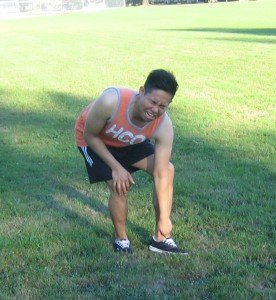Morton’s neuroma is a condition that causes pain amidst the 3rd and 4th toes due to the compression of a nerve. Remember that pain is a common symptom in many injuries and conditions. To learn to manage pain from certain conditions including Morton’s neuroma, register for first aid and CPR course with a credible provider near you.
Symptoms
The symptoms of Morton’s neuroma usually include pain, often with a pins and needles sensation on one side of a toe and the neighboring side of the next toe. Take note that the pain is aggravated by forefoot weight bearing and can also be triggered when the forefoot is squeezed which further compresses the nerve. Pressing amidst the 3rd and 4th metatarsals can also instigate the symptoms.

A close look on Morton’s neuroma
The nerves in the toes that send messages to the brain usually pass amidst the metatarsal bones of the foot. In case the arch in the foot is weak, it can cause the metatarsal bones to pinch on the nerve, resulting to inflammation. This is likely to occur between the 3rd and 4th bones which cause a numb sensation or pain on the interior of the two toes that the nerve supplies.
Oftentimes, it is also caused by a neuroma or benign tumor on the plantar digital nerves but it is not actually a true one but more of swelling of the nerves due to compression. The presence of scar tissue that surrounds the nerve can also be a contributing factor.
It is important to note that Morton’s neuroma can also be caused by wearing ill-fitting shoes that press against the nerve. In addition, certain activities that involve spinning on the ball of the foot such as in tennis or golf can also cause the condition.
Treatment
The individual must be encouraged to rest. If he/she continues with training, it will only aggravate the pain and inflammation as well as prevent the injury from healing properly. It is recommended to use a metatarsal padding beneath the forefoot which works by raising and spreading the bones of the forefoot, thus relieving pressure off the nerve. These pads spread the metatarsals, thus creating extra space for the nerve. The individual can consult a sports injury professional so that the right treatment and rehabilitation can be started. In some cases, orthotic inserts might be needed in order to correct any biomechanical issues of the foot.
When to consult a doctor
The doctor might prescribe anti-inflammatory medications such as ibuprofen. Just remember that this medication should be not taken by those who have asthma. By minimizing the swelling, it will allow more space for the nerve and reduce the pain.
Orthotic inserts into the shoes can help correct any biomechanical issues with the feet. Remember that this will not directly reduce the inflammation but can take off pressure from the nerve to allow the foot to heal and prevent the injury from returning.
Taping of the foot can also reduce pressure on the nerve. This can provide an instant effect on relieving the pain. In addition, exercises that will strengthen the arch of the foot can also prevent the injury from returning in the future. In severe cases, surgery might be an option.
